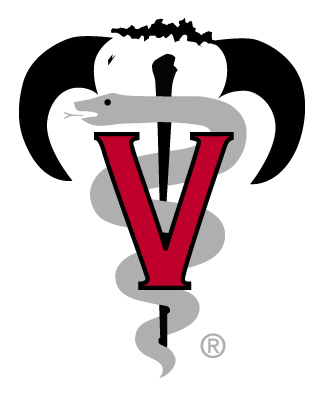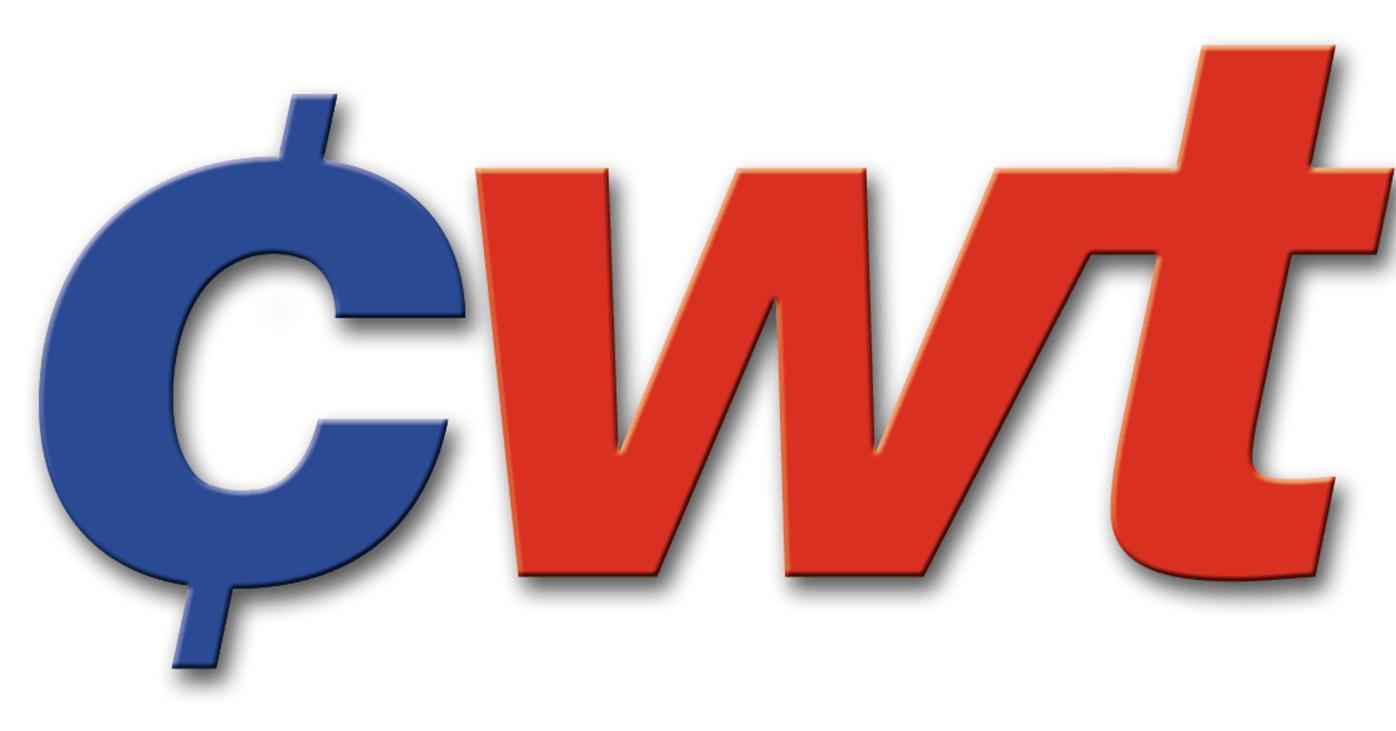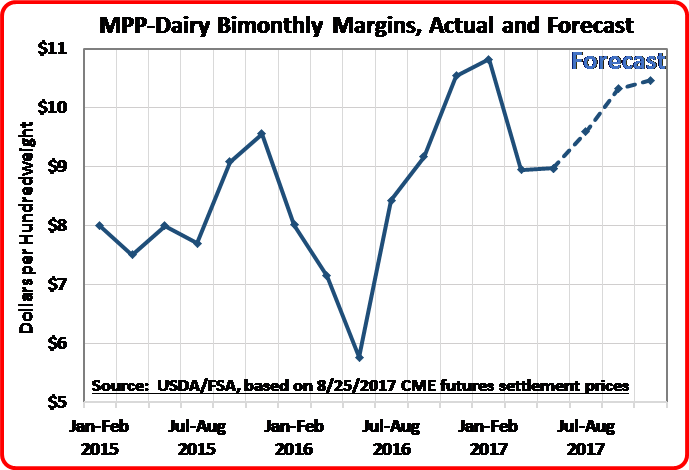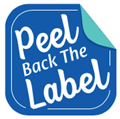The National Milk Producers Federation (NMPF) today urged federal and state food regulators to take enforcement action against imitation dairy product “Blue Magic Cashew Milk” for continuing to ignore federal standards of identity for dairy products.
Author: dcadmin
NMPF Asks Federal, State Regulators to Take Action Against Misleading Labeling of “Blue Magic” Milk
The National Milk Producers Federation (NMPF) is calling on federal and state food regulators to take enforcement action against imitation dairy product “Blue Magic Cashew Milk” for continuing to ignore federal standards of identity for dairy products.
NMPF Asks Federal, State Regulators to Take Action Against Misleading Labeling of “Blue Magic” Milk
The National Milk Producers Federation (NMPF) is calling on federal and state food regulators to take enforcement action against imitation dairy product “Blue Magic Cashew Milk” for continuing to ignore federal standards of identity for dairy products.
NMPF Urges Federal, State Regulators to Take Action Against Misleading Labeling of “Blue Magic” Milk
The National Milk Producers Federation (NMPF) today urged federal and state food regulators to take enforcement action against imitation dairy product “Blue Magic Cashew Milk” for continuing to ignore federal standards of identity for dairy products.
In a letter sent today to the U.S. Food and Drug Administration, and the California Department of Food and Agriculture, NMPF said that use of the standardized dairy term “milk” on a plant-based imitation made mostly from nuts and water is a violation of government standards defining milk as the product of a dairy animal.
“This ‘Blue Magic’ product completely ignores clearly-defined regulations specifying what milk is, and is deceiving to consumers seeking appropriate levels of milk’s actual nutrition for their families,” said Jim Mulhern, President and CEO of NMPF. “This beverage is not a nutritional substitute for real milk, regardless of its blatant attempt to co-opt dairy terms.”
NMPF first evaluated Blue Magic Milk, manufactured by California company Urban Remedy, in June 2017 as part of a marketplace survey examining the nutrients in imitation dairy foods. NMPF found that of the 244 beverages it reviewed, Blue Magic’s two-cup serving contained the highest sodium content, grams of fat and calories. Even a half-serving (1 cup) featured the highest calories and fat of all products surveyed, and was second highest in its sodium level.
By contrast, real low-fat milk, per cup, has more than four times the amount of Vitamin A, 3 grams more protein and 285 mg more calcium as Urban Remedy’s imitation version. Additionally, a serving of Blue Magic has 78 more calories, 10 grams more fat and 130 milligrams more sodium. An entire 16-ounce bottle of Blue Magic contains 470 mg of sodium — the equivalent of a fast-food hamburger.
Today’s action is the second time this year that NMPF has raised objections to federal and state authorities regarding Blue Magic Milk. Following its initial review of imitation products, National Milk raised its concerns with the FDA and the California Department of Food and Agriculture in June. Shortly thereafter, Urban Remedy made minor alterations to the beverage’s label, renaming the product as “Blue Magic Cashew Milk.” But according to NMPF, the beverage is still using the standardized term “milk,” without offering the same nutrition as real milk, triggering today’s follow-up letter to the agencies pointing out the continued violations in the labeling of the product.
This action against Blue Magic Cashew Milk is part of a new campaign by NMPF that will call attention to other imitation products that inappropriately use dairy terminology on their labels. Calling the effort “Dairy Imitators: Exposed,” it will draw attention to these products’ lack of compliance with federal standards, and their nutritional deficiencies when compared to real milk, yogurt, cheese and other dairy foods.
“The effort will further demonstrate to consumers, FDA and manufacturers of these powder, water and vitamin mixtures that simply calling something ‘milk’ doesn’t give it the natural richness of the real thing with its nine essential nutrients,” Mulhern said. “Despite their desire to steal the halo of real dairy foods, these companies must be forced to end their deceptive labeling tactics.”
###
The National Milk Producers Federation (NMPF), based in Arlington, VA, develops and carries out policies that advance the well-being of dairy producers and the cooperatives they own. The members of NMPF’s cooperatives produce the majority of the U.S. milk supply, making NMPF the voice of dairy producers on Capitol Hill and with government agencies. For more on NMPF’s activities, visit our website at www.nmpf.org.
NMPF Supports Effort to Bring Clarity to EPA’s Waters of the U.S. Regulation
ARLINGTON, VA – The National Milk Producers Federation (NMPF) told the U.S. Environmental Protection Agency (EPA) today that the dairy industry supports a two-step process to roll back the existing Waters of the U.S. (WOTUS) regulation and generate a new policy that provides farmers greater certainty in the future.
NMPF has supported efforts by the Trump Administration since January to restart the regulatory process behind the controversial 2015 Waters of the U.S. (WOTUS) rule. NMPF provided comments today to EPA in support of rescinding the 2015 rule so the agency can initiate a new regulatory process defining and regulating groundwater sources. The agency has been soliciting comments on the WOTUS revision process during the past two months.
“A fresh start and a more reasonable approach that complies with past Supreme Court rulings will be in the best interests of the environment and dairy farmers,” said Jamie Jonker, NMPF vice president for sustainability and scientific affairs, in comments to EPA. “We are committed to working with the EPA and the Army Corps of Engineers to find effective ways to protect America’s water supplies.”
Rescinding the 2015 policy – which is currently not being enforced because an appeals court suspended it last year, pending the outcome of several lawsuits – is the first step in a two-part process. In the forthcoming second step, EPA will need to propose a new rule that conforms to the various Supreme Court cases impacting definitions for what is considered a water of the U.S. In NMPF’s letter to EPA, Jonker said that EPA and the Army Corps will need to correct the ambiguity resulting from the 2015 rule’s lack of clarity on key terms and definitions, such as “adjacent,” “floodplain” and “significant nexus.”
“The agencies’ new notice-and-comment rulemaking needs to provide dairy farmers with certainty as to what constitutes navigable waters of the United States by clearly complying with the Supreme Court decisions,” NMPF wrote. “We look forward to working with you in the future for the proper clarity that dairy farmers need on WOTUS to continue to meet our shared commitment to clean water,” NMPF wrote.
###
The National Milk Producers Federation (NMPF), based in Arlington, VA, develops and carries out policies that advance the well-being of dairy producers and the cooperatives they own. The members of NMPF’s cooperatives produce the majority of the U.S. milk supply, making NMPF the voice of dairy producers on Capitol Hill and with government agencies. For more on NMPF’s activities, visit our website at www.nmpf.org.
NMPF Chairman’s Annual Meeting Invitation
FARM to Provide Programming at AABP Conference, Host Final 2017 Evaluator Training
 In September, the National Dairy FARM Program is joining the National Beef Quality Assurance Program to host a half day of programming at the 2017 annual conference of the American Association of Bovine Practitioners in Omaha, Neb.
In September, the National Dairy FARM Program is joining the National Beef Quality Assurance Program to host a half day of programming at the 2017 annual conference of the American Association of Bovine Practitioners in Omaha, Neb.
The meeting on Sept. 14 features several sessions that will focus on emerging animal care issues within the dairy industry. These include topics like the veterinarian’s role in crisis management and the release of the National Beef Quality Audit results. Speakers will include Dr. Nigel Cook of the University of Wisconsin School of Veterinary Medicine and Dr. Hans Coetzee of Kansas State University College of Veterinary Medicine. More information can be found on the AABP website.
In addition, FARM’s Animal Care Program will host the final 2017 Train-the-Trainer and Evaluator Training course from November 14-15 in Albuquerque, N.M. The two-day course will review FARM Program goals and explain how to successfully complete a FARM Version 3.0 evaluation under the new program guidelines.
All FARM Program trainers wishing to maintain their certification must attend an in-person training course. Additionally, all FARM Program Evaluators must be certified annually on Version 3.0 of the program to conduct evaluations. The registration deadline is Oct. 30. The link to register for the Train-the-Trainer and Evaluator Training course can be found here.
FARM Program, Innovation Center Host Customer Forums Around Country
The National Dairy FARM Program and the Innovation Center for U.S. Dairy cohosted three customer forums this summer that shared the dairy industry’s focus on social responsibility with prominent national and international dairy customers. Representatives from grocery stores, chocolate companies and restaurant chains attended forums in Los Angeles, Minneapolis and Washington, D.C.
Throughout each two-day forum, educational sessions provided a deep dive into the FARM Program. Expert speakers shared insights into the rigorous standards of the program, including animal care and environmental and antibiotic stewardship, as well as updates on emerging issues in the social responsibility arena. On the second day of the event, participants had the opportunity to visit a local dairy farm to see the FARM Program in action.
The FARM Program would like to thank Gordon Hay Dairy #6 in Ontario, Calif., Krause Holsteins in Buffalo, Minn., and Cow Comfort Inn Dairy in Union Bridge, Md., for hosting forum attendees, and all of the dairy customers for making these events a success. A final forum is planned for Jacksonville, Fla., from Oct. 17-18, 2017.
CWT Members Make 3.3 Million Pounds of Cheese Sales in August
 Cooperatives Working Together’s export assistance program helped members secure 32 contracts in August to sell 3.27 million pounds of American-type cheeses to customers in Asia, Central America, the Middle East, North Africa and Oceania. The product will be shipped during the months of August through November 2017.
Cooperatives Working Together’s export assistance program helped members secure 32 contracts in August to sell 3.27 million pounds of American-type cheeses to customers in Asia, Central America, the Middle East, North Africa and Oceania. The product will be shipped during the months of August through November 2017.
These transactions raise the total of CWT-assisted year-to-date net product sales to 48.31 million pounds of cheese and 3.01 million pounds of butter. These sales are going to customers in 17 countries in five regions, and will move the equivalent of 513.65 million pounds of milk on a milkfat basis overseas through November 2017.
Helping CWT member cooperatives gain and maintain world market share through the Export Assistance program in the long-term expands the demand for U.S. dairy products and the U.S. farm milk that produces them. This, in turn, positively affects all U.S. dairy farmers by strengthening and maintaining the value of dairy products that directly impact their milk price.
The amounts of dairy products and related milk volumes reflect current contracts for delivery, not completed export volumes. CWT will pay export assistance to the bidders only when export and delivery of the product is verified by the submission of the required documentation.
All cooperatives and dairy farmers are encouraged to add their support to this important program. Membership forms are available on the CWT website.
MPP Forecast: September
 The U.S. Department of Agriculture’s (USDA) Farm Service Agency announced in August that the monthly Margin Protection Program (MPP) feed cost for July was $8.22/cwt. NASS also reported that the U.S. average all-milk price was $17.30/cwt. in July, which was unchanged from June. The monthly MPP margin for July was $9.08/cwt.
The U.S. Department of Agriculture’s (USDA) Farm Service Agency announced in August that the monthly Margin Protection Program (MPP) feed cost for July was $8.22/cwt. NASS also reported that the U.S. average all-milk price was $17.30/cwt. in July, which was unchanged from June. The monthly MPP margin for July was $9.08/cwt.
Following recent drops in cash markets, particularly for block cheese, the current CME dairy futures have become less optimistic about the milk price outlook through the end of the year. They now indicate that there may be about another $1/cwt. of upside from the July all-milk price by November, the heart of the holiday season. The grain market futures collectively indicate that the MPP feed cost will remain relatively flat through the end of the year and that the monthly MPP margin will therefore advance to just over $10/cwt. by November. USDA’s current MPP margin forecast, based on late August CME futures settlements, is slightly more optimistic. As shown, it forecasts that the last bimonthly margin for the year will be about $10.50/cwt.
USDA’s MPP margin forecasts are updated daily online. NMPF’s Future for Dairy website offers a variety of educational resources to help farmers make better use of the program.
Land O’ Lakes on Fortune Magazine List Sustainable Companies
NMPF member Land O’ Lakes, Inc. was recently included in Fortune Magazine’s annual Change the World list, which honors 50 companies across the globe that include positive social impact as part of their core business strategy. Fortune ranked companies on three criteria: measurable social impact, business results and degree of innovation. Land O’Lakes was honored in part for its SUSTAIN program, which develops technology and tools to facilitate farmers’ sustainability efforts.
In 2016, Land O’Lakes, Inc., formed SUSTAIN as a standalone business unit and natural extension of its member-farmers’ commitment to caring for the earth. Since then, SUSTAIN has focused on conserving resources and highlighting methods to reduce greenhouse gas emissions, improve soil health, reduce soil loss and improve water quality.
“Stewardship of the land, water and air has been a hallmark of our farmers for generations, and Land O’Lakes SUSTAIN is a step forward to serve our members and customers even better while continuing to preserve our resources,” says Chris Policinski, president and CEO of Land O’Lakes, Inc. “We believe that view, paired with the tools and technology we have developed, will help sustainability practices across the value chain of all our businesses and those of our partners.”
NMPF President and CEO Jim Mulhern added: “This honor illustrates that farmers play a pivotal role in building a sustainable world. We are proud of the example set by Land O’Lakes as it commits to making meaningful impact on the environment by working with farmers, for farmers and for a better world for all.”
NMPF Launches New Consumer Campaign to Call Out Misleading Food Labels
 NMPF launched a new consumer-focused campaign last week to highlight the need for truth and transparency in food marketing. Billed as “Peel Back the Label,” the campaign calls out food manufacturers that increasingly utilize absence claims like “GMO free” to play on consumers’ food safety fears and misconceptions.
NMPF launched a new consumer-focused campaign last week to highlight the need for truth and transparency in food marketing. Billed as “Peel Back the Label,” the campaign calls out food manufacturers that increasingly utilize absence claims like “GMO free” to play on consumers’ food safety fears and misconceptions.
This effort comes as almost 70 percent of consumers say they look to front-of-label claims when making food purchasing decisions, and as food manufacturers increasingly turn to fear-based food labeling to hold or gain market share, presenting consumers with more confusion in the grocery aisles.
“America’s dairy farmers strongly support open, honest and transparent engagement with consumers. The deceptive labels and fear-based marketing increasingly used by some food manufacturers damages consumer trust and jeopardizes the safe, sustainable farming practices that have enhanced farm productivity over the last 20 years,” said Jim Mulhern, president and CEO of NMPF. “Consumers have a right to both truth and transparency in food labeling. We launched this campaign to help consumers peel back the label on deceptive food marketing in the name of profits.”
This trend toward deceptive labeling practices is particularly concerning for the dairy industry. Last year, NMPF and other leading farm organizations publicly raised concerns regarding Dannon’s announcement of its plans to eliminate GMOs from its products, saying the company’s decision was “the exact opposite of the sustainable agriculture that you claim to be seeking.”
Other recent examples of deceptive or confusing marketing surrounding GMOs include:
- Hunt’s adding a “GMO-free” label to its canned tomatoes, even though there is no such thing as a genetically modified tomato currently on the market.
- Florida’s Natural adding a Non-GMO Project certification to its orange juice labels, despite the fact there are no commercially grown, genetically modified oranges.
- TruMoo milk acknowledges GMOs are safe on its website, while at the same time launching an advertising campaign for its milk with the tagline, “No GMOs, No Worries.”
Through the Peel Back the Label website, the campaign will give consumers access to the tools they need to separate hype from fact as they work to make informed food decisions for their families. It also will include ways for consumers to tell their own stories about the negative impacts of deceptive labeling, and share information with their social networks. NMPF will continue to highlight the problems caused by fear-based marketing as it also raises the issue with the news media, opinion leaders and the public.





